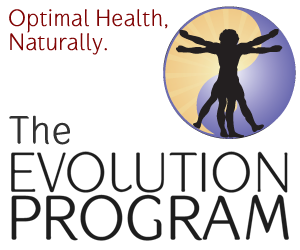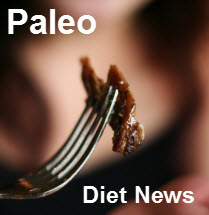Is Intermittent Fasting and Paleo a Good Match?
 As most people know, the standard conventional wisdom is that the more frequently a person eats during the course of a day, the more they will bolster their metabolism. Trainers and diet gurus everywhere say that “six meals a day” is the sweet spot for a fast metabolism.
As most people know, the standard conventional wisdom is that the more frequently a person eats during the course of a day, the more they will bolster their metabolism. Trainers and diet gurus everywhere say that “six meals a day” is the sweet spot for a fast metabolism.
Another school of thought says that whenever you have food in your belly, your body will utilize that as a source of energy, and never need to tap into existing fat stores. So, the more time that a person spends with no food in their stomach, the more opportunity they have to release fat from storage, and use it to fuel their body. Enter, Intermittent Fasting or “IF” for short. Sounds neat, doesn’t it? So what is IF?
Intermittent Fasting, often shortened to I.F. is the process of fasting on a semi regular basis. The traditional approach to using intermittent fasting would be to to take a day off from eating every 48 hours. Simply explained this would mean you eat as normal on Thursday and then not eat on Friday but resume eating as normal on the Saturday, before again fasting on the Sunday. In this way the Intermittent Fasting schedule is restricting calories over the week by having periods where you are not consuming food.” – Retireddieter.com
Martin Berkhan’s version of intermittent fasting called “Leangains”, goes something like this:
The Leangains protocol consists of two phases; 16 hours of fasting, followed by 8 hours of feeding. During this period, three meals are usually eaten. Depending on the day, the composition of those meals varies; on workout days, carbs are prioritized before fat, while on rest days fat intake is higher. Protein remains fairly high on all days. That’s a very basic and general description of the protocol I employ; of course, variables change depending on goals, gender, age, body fat and activity levels, but it would be hard to describe it in greater detail without drifting off too far.”
IF has many benefits. Obviously there is the all important weight-loss, or more accurately fat-loss, but there are several other great reasons that IF should be part of your weekly routine:
Intermittent Fasting Is Natural
From an evolutionary stand point, our ancestors fasted when food was scarce or if they returned from a failed hunting trip. So it’s very possible that our bodies are actually designed to fast occasionally. There are many health benefits to intermittent fasting that suggests this, such as:
▪ Slows down aging
▪ Reduces oxidative stress
▪ Lowers insulin levels
▪ Reduces the risk of various diseases such as diabetes and alzheimer’s
Cycled fasting to lose weight and to improve your health is not a new concept. There have been many human and animal studies on intermittent fasting during the last 18 years. Animal studies began as early as 1943. There was a recent article (2007) by the American Journal of Clinical Nutrition that explained a lot of these benefits, it was a summary review of 44 different studies.” – getthisripped.com
I’ve been asked many times if intermittent fasting and Paleo is a good match, and I think that the answer is a resounding “yes”. Most of the guidelines on IF are not concerned with food quality or macronutrients, so if people have success with losing weight, while eating a standard American diet, imagine how effective IF would be when combined with a Paleo Template style of eating. I also think that IF coupled with very-low-carb Paleo would serve to totally obliterate body-fat, like a fat blasting nuclear missile!. Give it a go, and let me know how it works for you!
-
If you found this article useful, please click the ‘LIKE’ button below to share on Facebook. We also invite you to leave comments, and join the Paleo Diet News discussion!
Go to www.undergroundnutritionist.com, and download my 30-Day UN-Challenge eBook now……It’s a step-by-step guide to your personal health revolution.
Barry Cripps is a Paleo-based Nutrition and Wellness Consultant, who operates out of Bowling Green, Kentucky.
For more information please visit: www.undergroundnutritionist.com






I have been using the “Fast-5″ approach,(http://www.fast-5.com/) 19 hrs fasting/5 hr eating window, and have been really happy with the lifestyle. I was low carbing before starting (haven’t transitioned into Paleo…yet) so starting IF was a breeze. No hunger pains or cravings.
I can say I am finally losing weight again! I had plateaued for Weeks! I have more energy now too! And, I have all this time to do other things instead of eating, LOL!
LOVE, IF! I HIGHLY recommend it with LC/Paleo lifestyle!
Hi Kim! I agree with you totally. I heard the writer of the “Fast 5″ book on Jimmy Moore’s Podcast a little while ago. It sounds like a really solid IF plan, and I’ve been doing it on and on for a few weeks myself, with some great results.
Thanks for commenting!
That is terrific Kim! Anything that you do to improve your health is well worth it. Intermittent fasting is amazingly, a great way to get energy. I find that when I fast, I have more energy. As soon as I break my fast I lose energy. The mechanics is interesting. Good luck with low carb. I hope you can see your way to getting on the Paleo diet soon. I did low carb and have found Paleo to be better in that it emphasizes natural whole foods.
Pingback: Paleo Village - Glycogen: Storage Energy and the Paleo Diet - carbs, fat, Illustrated Biochemistry, Paleo Diet, proteins, sugar - | Paleo Village